EVGA SuperNOVA 1000 G3 PSU Review
We already reviewed the SuperNOVA 850 G3, which left a good impression on us. Today, we're looking at the 1000 G3, this family's current flagship model. It's a physically diminutive PSU that offers high performance in every area.
Why you can trust Tom's Hardware
Transient Response Tests
Advanced Transient Response Tests
For details on our transient response testing, please click here.
Ιn these tests, we monitor the EVGA 1000 G3's response in several scenarios. First, a transient load (10A at +12V, 5A at 5V, 5A at 3.3V, and 0.5A at 5VSB) is applied for 200ms as the PSU works at 20 percent load. In the second scenario, it's hit by the same transient load while operating at 50 percent load.
In the next sets of tests, we increase the transient load on the major rails with a new configuration: 15A at +12V, 6A at 5V, 6A at 3.3V, and 0.5A at 5VSB. We also increase the load-changing repetition rate from 5 Hz (200ms) to 50 Hz (20ms). Again, this runs with the PSU operating at 20 and 50 percent load.
The last tests are even tougher. Although we keep the same loads, the load-changing repetition rate rises to 1 KHz (1ms).
In all of the tests, we use an oscilloscope to measure the voltage drops caused by the transient load. The voltages should remain within the ATX specification's regulation limits.
These tests are crucial because they simulate the transient loads a PSU is likely to handle (such as booting a RAID array or an instant 100 percent load of CPU/GPUs). We call these "Advanced Transient Response Tests," and they are designed to be very tough to master, especially for a PSU with a capacity of less than 500W.
Advanced Transient Response at 20 Percent – 200ms
| Voltage | Before | After | Change | Pass/Fail |
|---|---|---|---|---|
| 12V | 12.172V | 12.127V | 0.37% | Pass |
| 5V | 5.017V | 4.920V | 1.93% | Pass |
| 3.3V | 3.313V | 3.206V | 3.23% | Pass |
| 5VSB | 5.056V | 5.018V | 0.75% | Pass |
Advanced Transient Response at 20 Percent – 20ms
| Voltage | Before | After | Change | Pass/Fail |
|---|---|---|---|---|
| 12V | 12.173V | 12.102V | 0.58% | Pass |
| 5V | 5.017V | 4.896V | 2.41% | Pass |
| 3.3V | 3.313V | 3.195V | 3.56% | Pass |
| 5VSB | 5.055V | 5.020V | 0.69% | Pass |
Advanced Transient Response at 20 Percent – 1ms
| Voltage | Before | After | Change | Pass/Fail |
|---|---|---|---|---|
| 12V | 12.173V | 12.105V | 0.56% | Pass |
| 5V | 5.017V | 4.918V | 1.97% | Pass |
| 3.3V | 3.313V | 3.157V | 4.71% | Pass |
| 5VSB | 5.055V | 5.017V | 0.75% | Pass |
Advanced Transient Response at 50 Percent – 200ms
| Voltage | Before | After | Change | Pass/Fail |
|---|---|---|---|---|
| 12V | 12.156V | 12.107V | 0.40% | Pass |
| 5V | 5.014V | 4.920V | 1.87% | Pass |
| 3.3V | 3.313V | 3.207V | 3.20% | Pass |
| 5VSB | 5.035V | 4.998V | 0.73% | Pass |
Advanced Transient Response at 50 Percent – 20ms
| Voltage | Before | After | Change | Pass/Fail |
|---|---|---|---|---|
| 12V | 12.155V | 12.081V | 0.61% | Pass |
| 5V | 5.014V | 4.899V | 2.29% | Pass |
| 3.3V | 3.313V | 3.195V | 3.56% | Pass |
| 5VSB | 5.035V | 5.000V | 0.70% | Pass |
Advanced Transient Response at 50 Percent – 1ms
| Voltage | Before | After | Change | Pass/Fail |
|---|---|---|---|---|
| 12V | 12.156V | 12.092V | 0.53% | Pass |
| 5V | 5.014V | 4.919V | 1.89% | Pass |
| 3.3V | 3.313V | 3.187V | 3.80% | Pass |
| 5VSB | 5.035V | 5.003V | 0.64% | Pass |
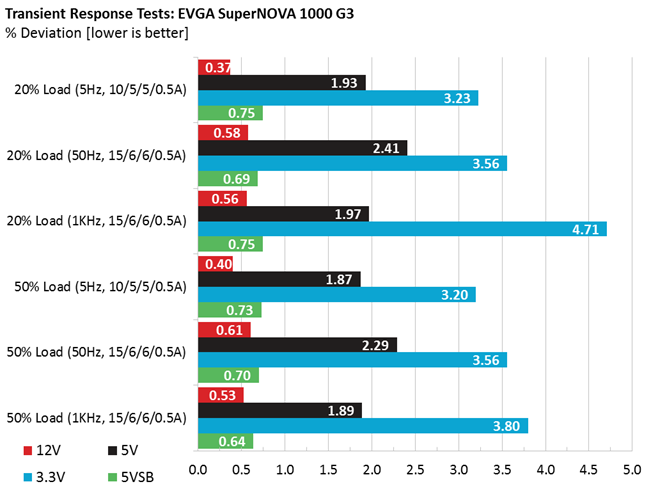
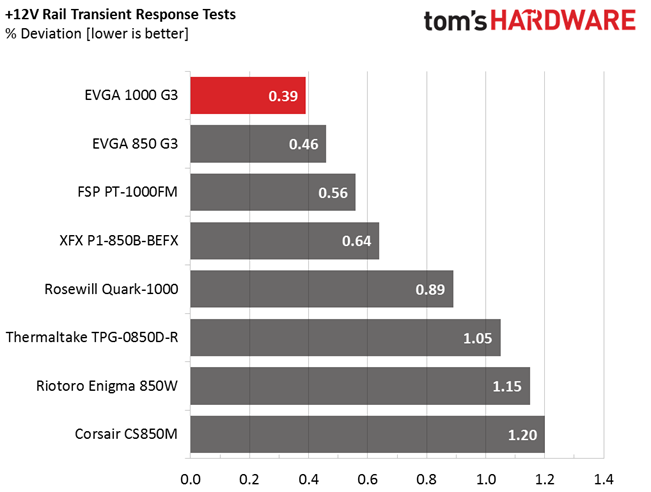

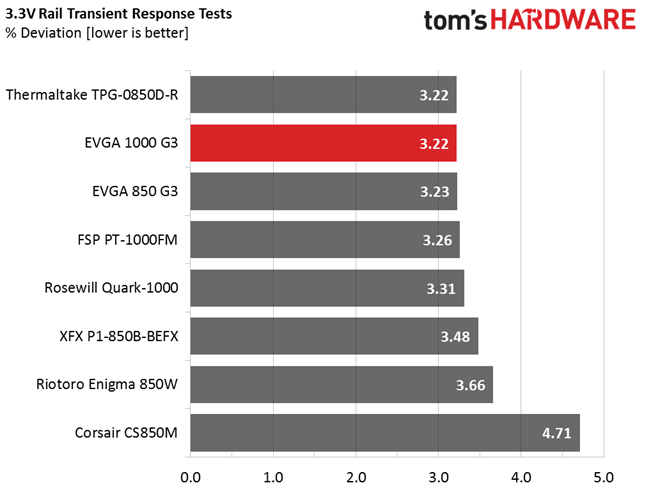

The transient response of the +12V rail is excellent; this is common to all new Leadex platforms. The 5V and 5VSB rails perform well, while the 3.3V rail exceeds 4% only during the 20%/1ms test.
Get Tom's Hardware's best news and in-depth reviews, straight to your inbox.
Overall, EVGA achieves good performance, though it'd be nice to see lower deviations at 3.3V. The truth is that this rail is only lightly used in contemporary PCs.
Here are the oscilloscope screenshots we took during Advanced Transient Response Testing:
Transient Response At 20 Percent Load – 200ms

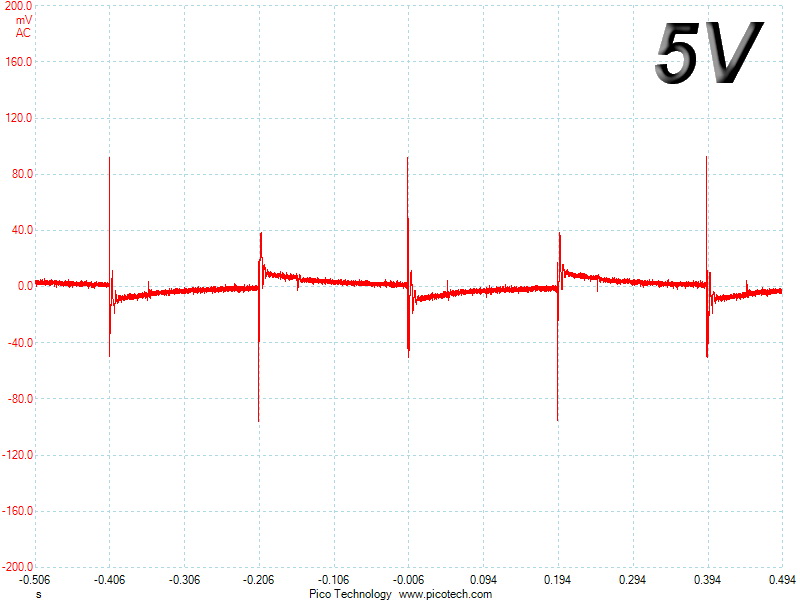
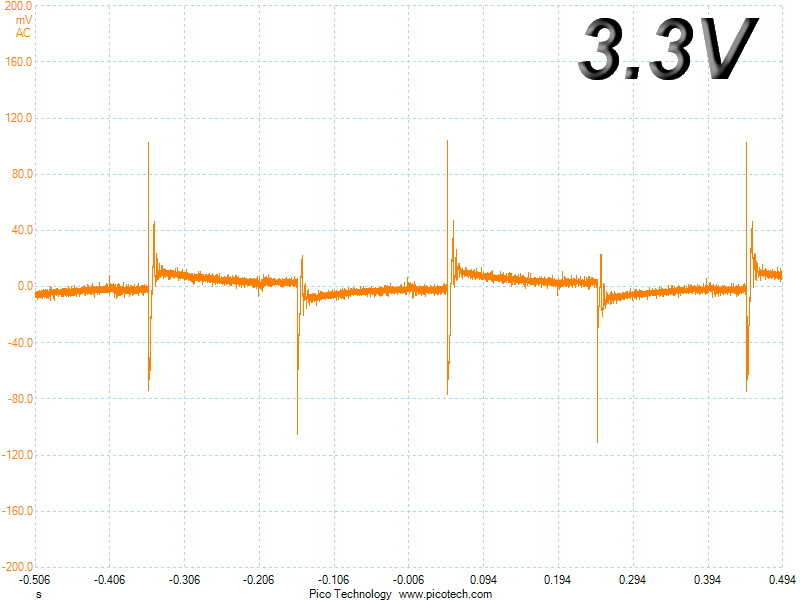
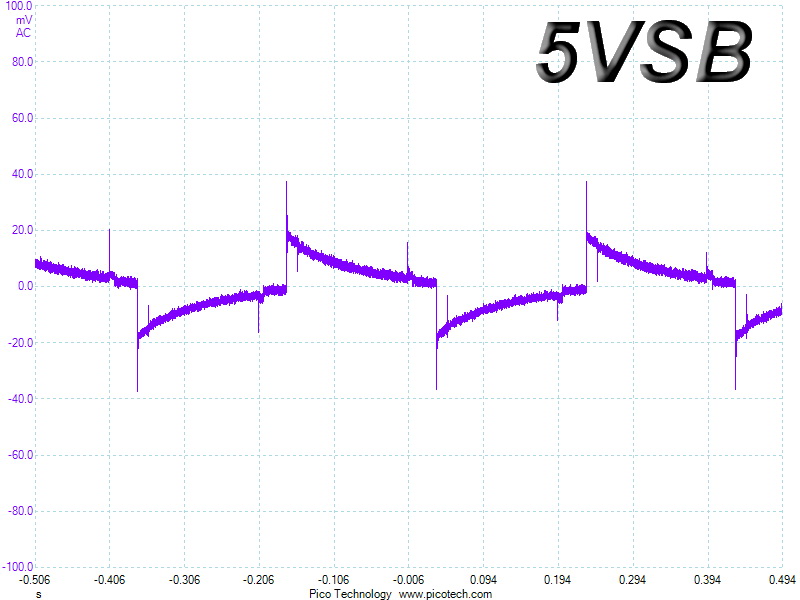
Transient Response At 20 Percent Load – 20ms

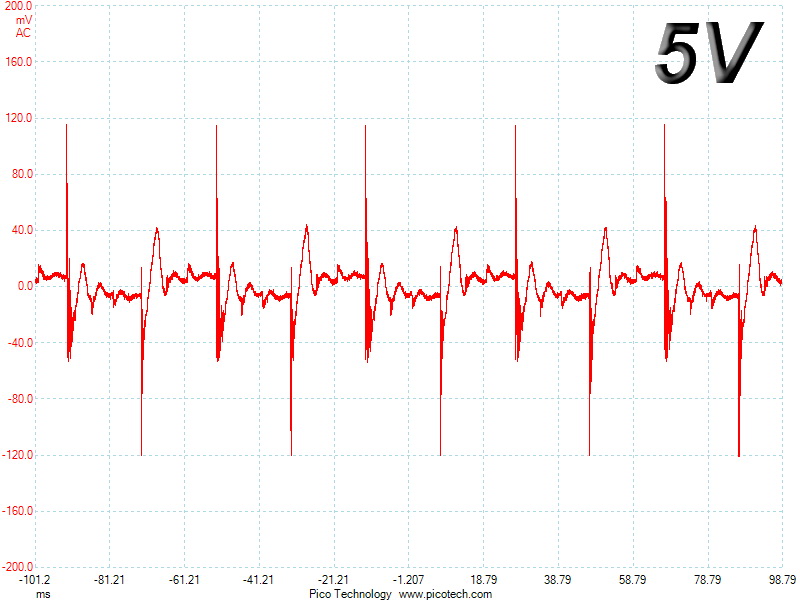
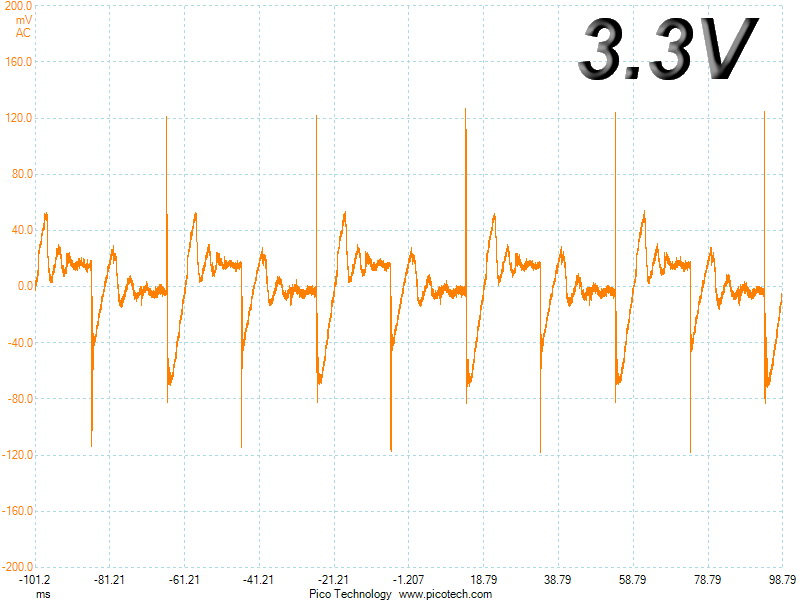

Transient Response At 20 Percent Load – 1ms
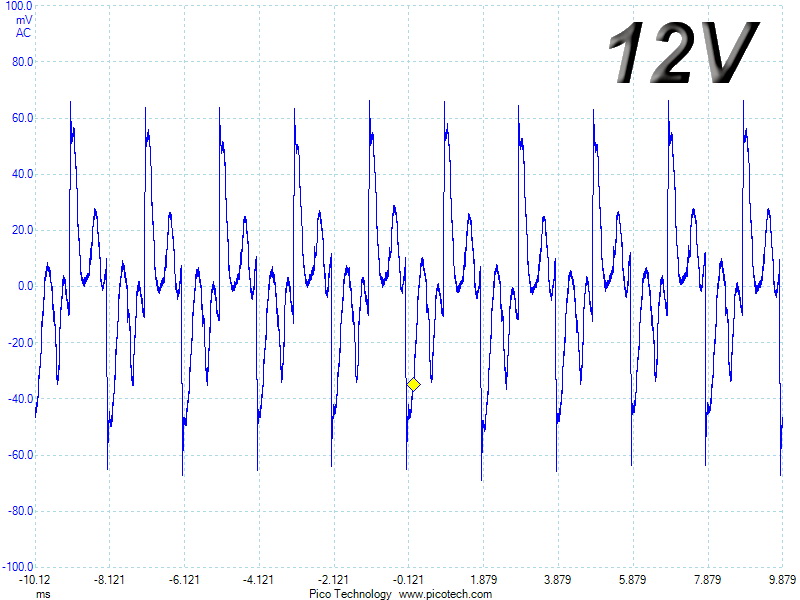
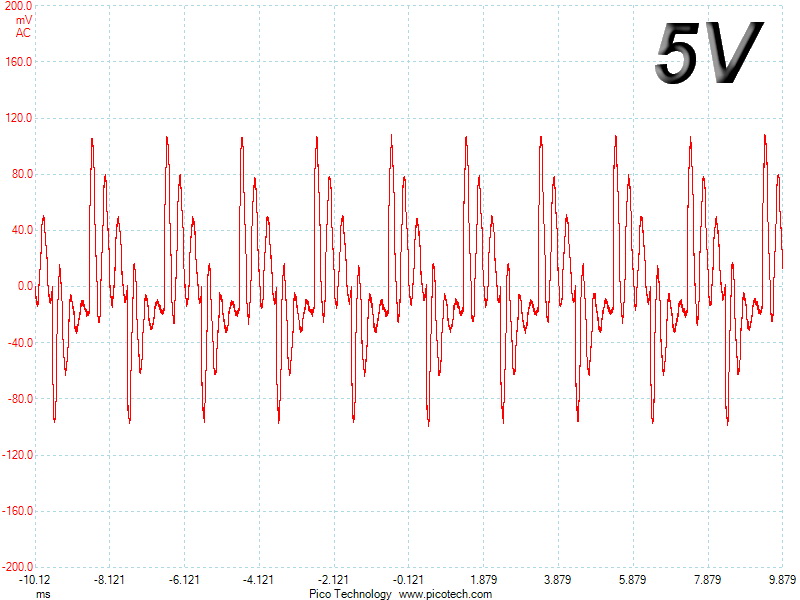
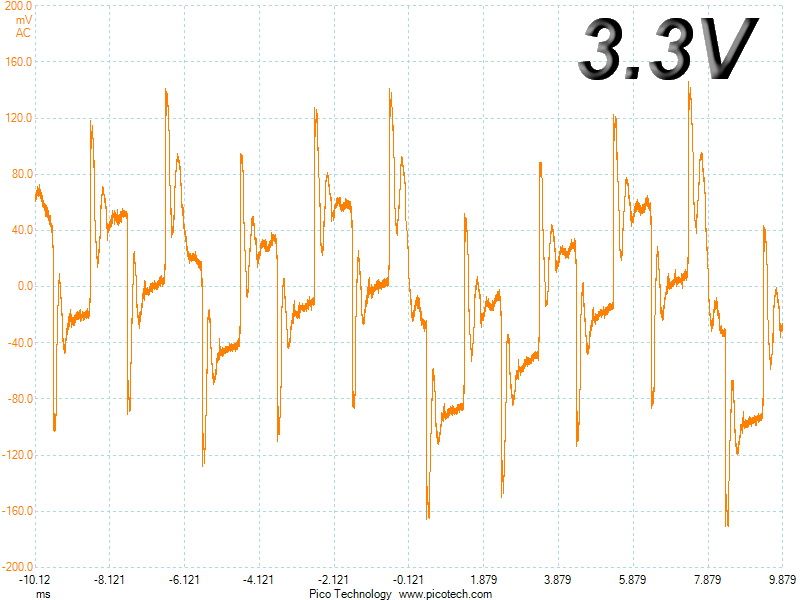

Transient Response At 50 Percent Load – 200ms
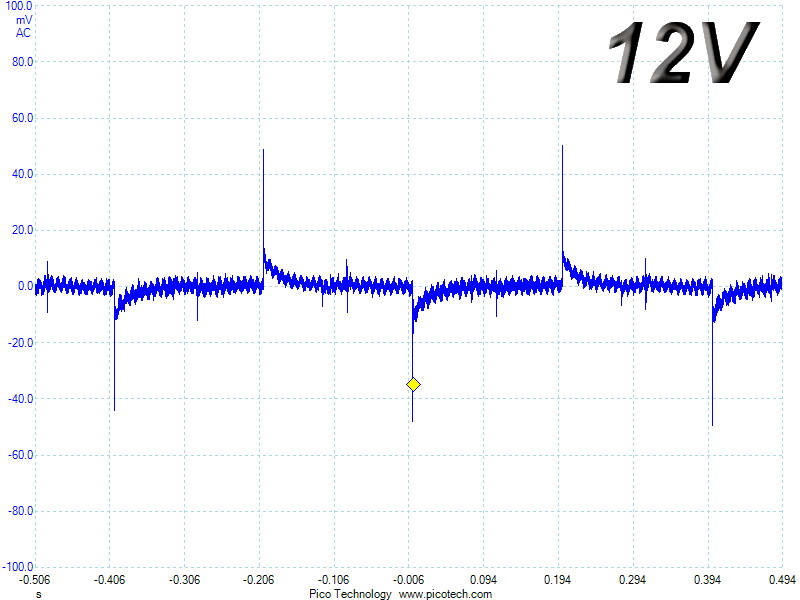


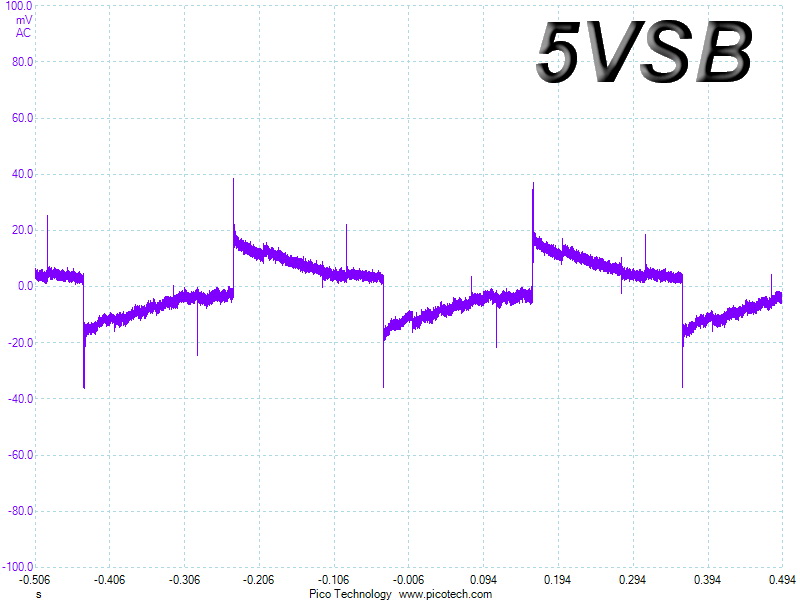
Transient Response At 50 Percent Load – 20ms
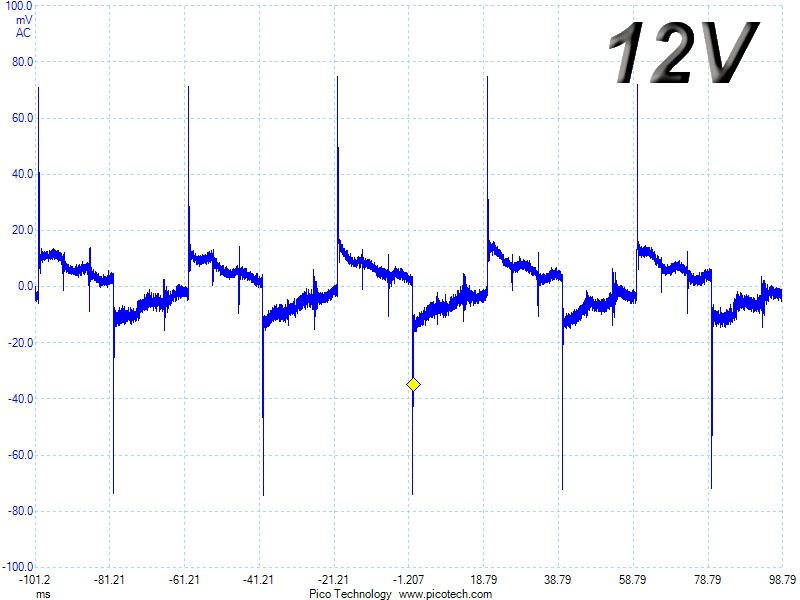

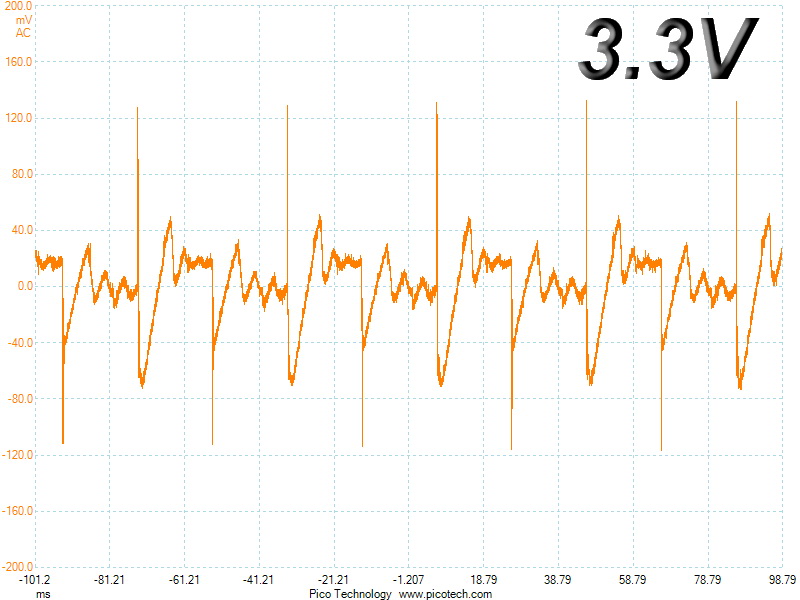
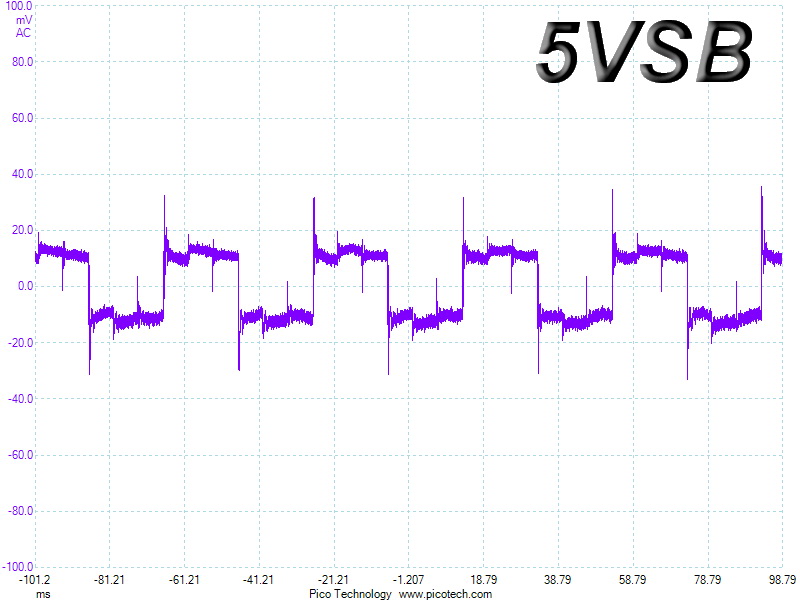
Transient Response At 50 Percent Load – 1ms
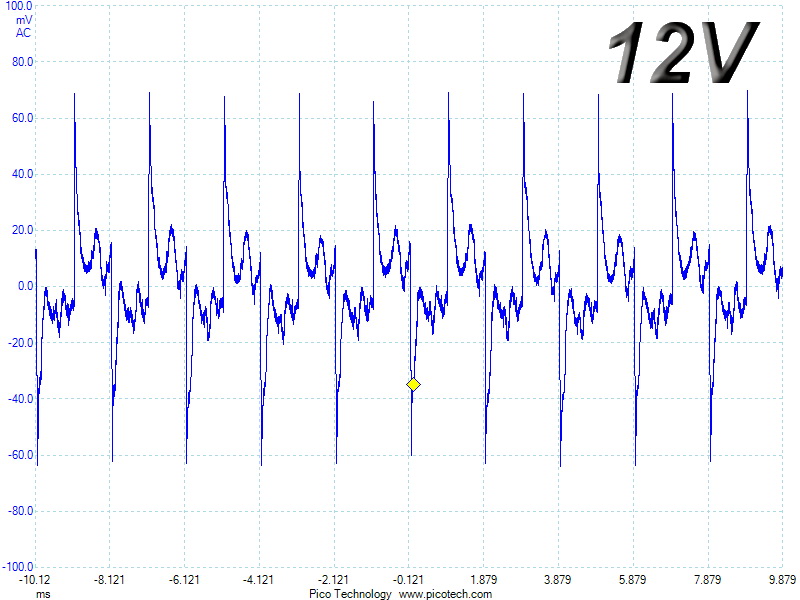

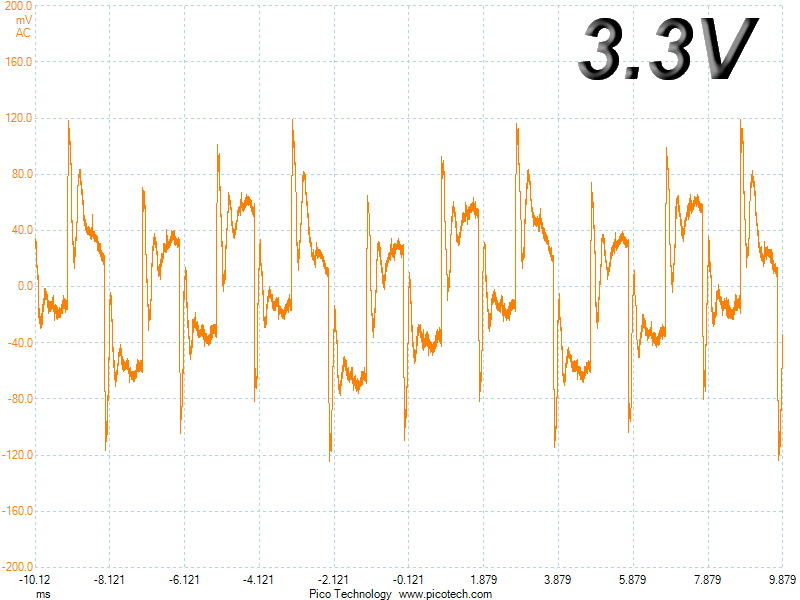
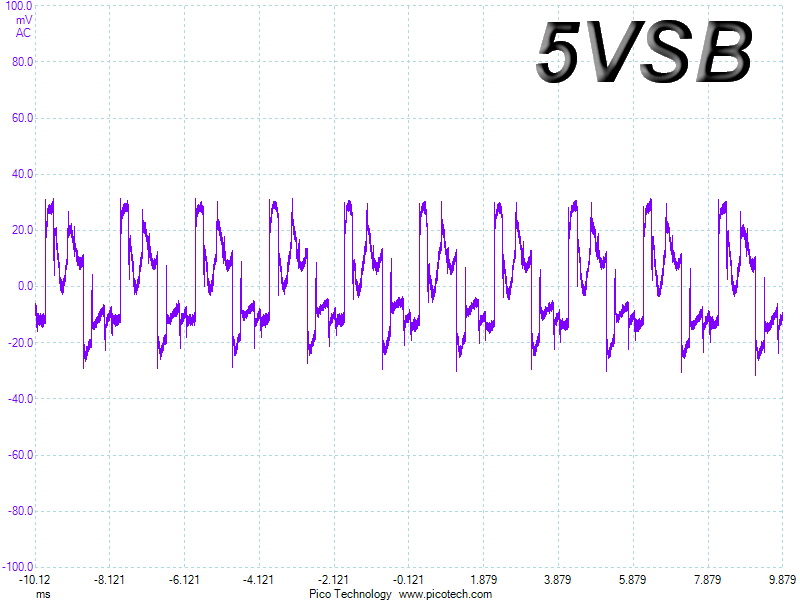
Turn-On Transient Tests
In the next set of tests, we measure the PSU's response in simpler transient load scenarios—during its power-on phase.
For the first measurement, we turned the SuperNOVA 1000 G3 off, dialed in the maximum current the 5VSB could output and switched the PSU back on. In the second test, we dialed the maximum load the +12V could handle and started the 1kW supply while it was in standby mode. In the last test, while the PSU was completely switched off, we dialed the maximum load the +12V rail could handle before switching it back on from the loader and restoring the power. The ATX specification states that recorded spikes on all rails should not exceed 10 percent of their nominal values (+10 percent for 12V is 13.2V, and 5.5 V for 5V).
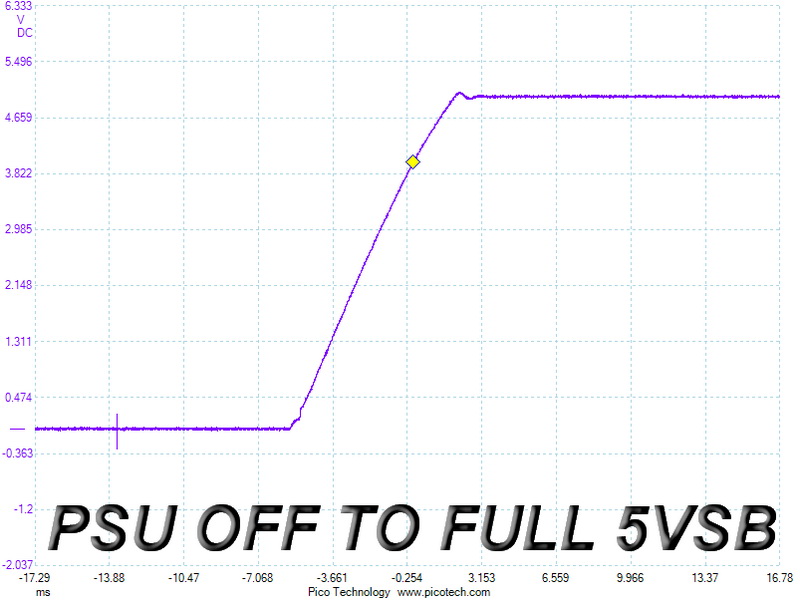
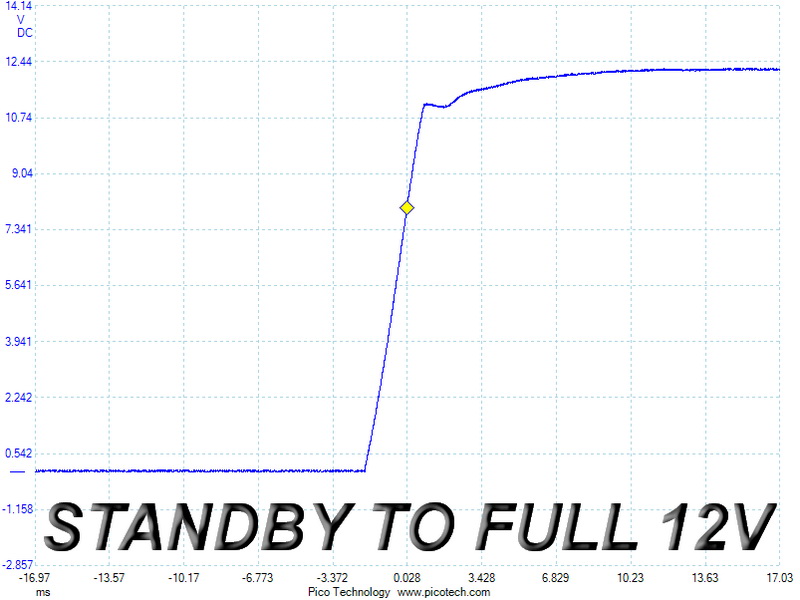
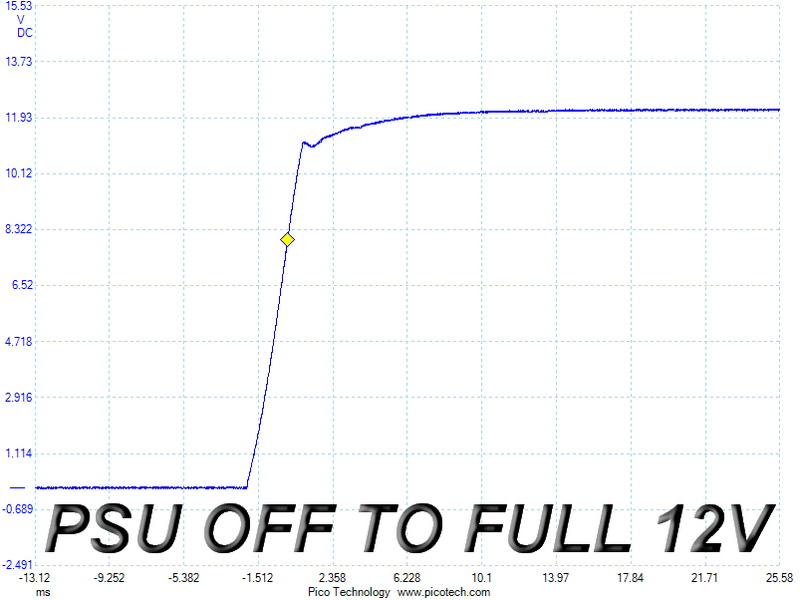
There is a minor voltage overshoot at 5VSB (nothing to worry about) and two minor ones at +12V, clearly below the rail's nominal voltage. The SuperNOVA 1000 G3 again demonstrates good performance.
Current page: Transient Response Tests
Prev Page Cross-Load Tests And Infrared Images Next Page Ripple Measurements
Aris Mpitziopoulos is a contributing editor at Tom's Hardware, covering PSUs.
-
powernod 140$. Exactly the same cost with Corsair's RMx1000 current pricing. Not sure which unit i would choose between those 2.Reply -
BugariaM Nice.Reply
>>>The 1000 G3's single bulk cap is provided by Chemi-Con (400V, 820uF, 2000h @ 105°C, CE)
Strangely, but I did not find "CE" series of capacitors in the Nippon Chemi-Con catalog -
10tacle Wow. The price point of this and overall performance makes this a serious player even for those who were in the market for nothing more than 850W gold or even platinum PSUs. So many people out there say "you don't need more than a xxxW power supply for your build." I like to buy based on <60% of calculated max load use of my build for less fan noise, heat output, and higher efficiency wall draw.Reply
Buying a gold 600W PSU when my rig uses 500W for example does not make much sense to me. I'd prefer to spend a little more and buy a gold 850W ($110USD vs. $130USD in the example of these two 650 & 850 G3 series on NewEgg right now). Not only for a higher efficiency operation as described above, but for future headroom growth. But I understand many do not think that and look to save a few dollars everywhere...one being on the PSU. -
10tacle Reply19478429 said:140$. Exactly the same cost with Corsair's RMx1000 current pricing. Not sure which unit i would choose between those 2.
Keep in mind when comparing the RM1000x that it was introduced at $180 in November 2015 and it took nearly a year to see the prices drop down below $150. The EVGA was originally released at $170 and has only been out for four months. Also keep in mind that the Corsair is marketed more for silent operation (drawback to that shown below).
If none of the drawbacks described and shown here do not bother you, and if overall "hot" efficiency and exhaust temperature are among top priorities for you, then the EVGA is the better performer. Average efficiency result of 7 load line tests, and the average exhaust temps under each test:
EVGA - 88.571%, 45.0C
Corsair - 87.857%, 49.8C
^^While the <1% efficiency difference is nominal and will not be seen on your monthly power bill, that nearly 5C difference coming out can make a slight difference in the temperature of your room in the summer. So the Corsair being quieter has a drawback.
http://www.jonnyguru.com/modules.php?name=NDReviews&op=Story4&reid=494 (EVGA)
http://www.jonnyguru.com/modules.php?name=NDReviews&op=Story4&reid=449 (Corsair)
-
Co BIY I would have liked to see the EVGA 1000 G2 in the performance tables as well. Both to see the generational improvement and to make a value comparison while both units are on the market.Reply
Is EVGA stopping production of the G2 series ? -
hst101rox 10TACLE, if the efficiency of the EVGA and the Corsair are nearly identical, the ~5 degree C temp difference could be just from the amount of airflow being less in the Corsair. Power consumption is the only thing that equates to BTUs, heat.Reply -
10tacle Reply19479497 said:10TACLE, if the efficiency of the EVGA and the Corsair are nearly identical, the ~5 degree C temp difference could be just from the amount of airflow being less in the Corsair. Power consumption is the only thing that equates to BTUs, heat.
That's why I stated the downside to the Corsair is the hotter air coming out the back. Same thing with a video card: you have to sacrifice more heat output for a quieter fan speed.
-
Aris_Mp I don't have 115V test results (but only 230V) for the G2s, so I couldn't add them to the graphs.Reply -
Co BIY "We didn't get any OCP results because our unit died during the OPP test, meaning either that this particular sample had a problem or OPP is set very high."Reply
Seems like this would be a big deal ?
Maybe at least one bullet in the Con column. -
Aris_Mp I have another one here, which come late, to test. If it dies as well then I will update the con list.Reply